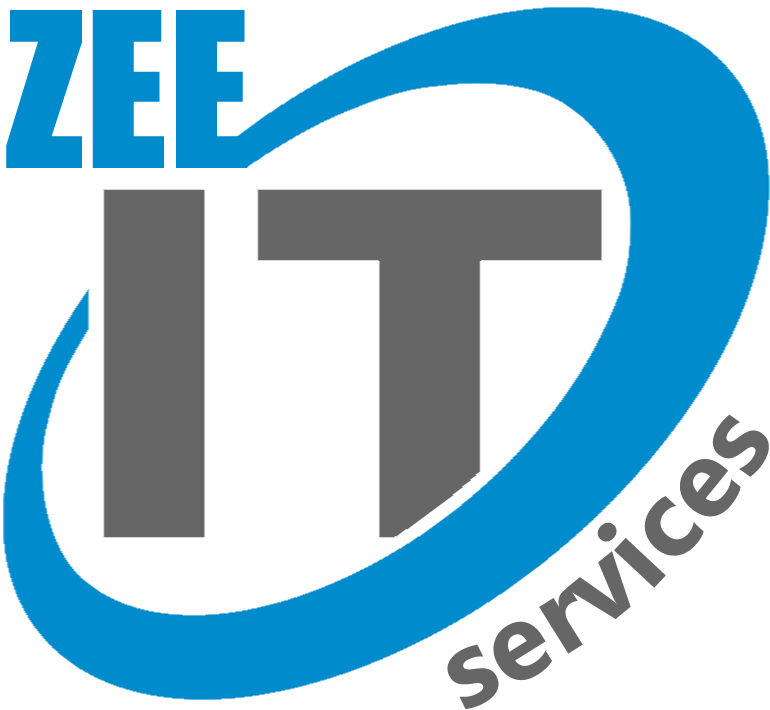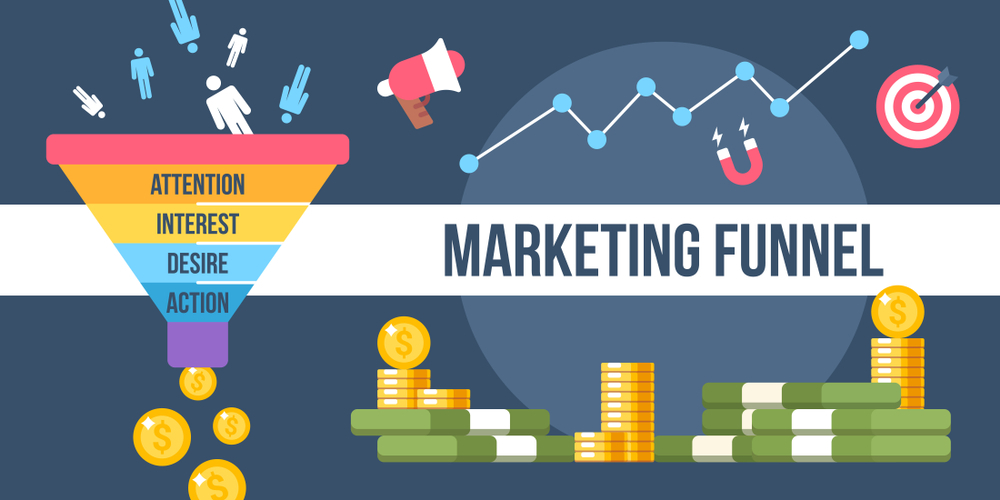You’ve probably heard the term “marketing funnel,” but what does it mean? When we buy something, we go through several steps, starting with product selection and ending with the actual purchase. These actions are crucial for a company. These procedures reveal the preferences and choices of the customer, as well as what they genuinely desire. Marketing funnels can significantly impact your success, whether you’re the owner of a small business or a huge organization.
Because each client has unique preferences, customer journeys differ from customer to customer and can become complicated. However, a marketing funnel can help you understand a complex concept in a more straightforward and understandable way. Using a marketing funnel, you may quickly and simply understand your target market, identify all the areas in which your customer journey needs improvement, and adjust your marketing strategy as necessary.
In comparison to marketing efforts that target a single buying step, full-funnel marketing strategy can result in up to 45% greater ROI and a 7% increase in offline sales. Without any doubt, using a funnel to analyse your customers’ behaviour, preferences, and wants is the ideal strategy. However, before using a funnel, you need to understand what a funnel is, why it’s vital for our organization, and how it can help it. Furthermore, This guide is to give you complete guidance about the marketing funnel. We’ll explore why marketing funnels are important, delve into their stages, differentiate between B2B and B2C funnels, discuss how to create them, and highlight their benefits. So why do we wait, let’s start it!
What is a Marketing Funnel?
At its core, a marketing funnel is a visual representation of a customer’s journey from awareness to conversion. It’s akin to an actual funnel, where potential customers enter at the top and gradually narrow down their choices until they make a purchase. Moreover, Here’s a breakdown of the stages:
Marketing Funnel Stages
Awareness
At the top of the marketing funnel is the awareness stage. This is where potential customers first become aware of your brand or product. They might discover your business through social media because 54% of consumers conduct product research there. The goal here is to capture their attention and make a memorable impression.
Interest
Once potential customers are aware of your brand, they move to the interest stage. During this phase, they begin to explore your offerings in more detail. They might visit your website, read blog posts, or watch videos. Your content should aim to pique their interest and provide valuable information.
Consideration
In the consideration stage, potential customers are actively evaluating your products or services. They might compare your offerings with those of competitors, read reviews, or request more information. Moreover, It’s crucial to provide them with the information they need to make an informed decision.
Intent
The intent stage signifies a strong interest in your offerings. Potential customers are close to making a purchase decision. At this point, your marketing efforts should focus on guiding them toward conversion. This might involve offering discounts, free trials, or personalized recommendations.
Purchase
The purchase stage is where the conversion happens. Customers make a buying decision and complete the transaction. It’s essential to ensure a seamless purchasing process to reduce friction and increase customer satisfaction.
Post-Purchase
The journey doesn’t end with a purchase. The post-purchase stage involves nurturing the customer relationship. Provide exceptional customer support, offer relevant upsells or cross-sells, and encourage reviews and referrals. Satisfied customers can become loyal advocates for your brand.
Marketing Funnel Practical Examples
Now that we understand all the stages of the marketing funnel Let’s explore some real-world marketing funnel examples to see these principles in action and see the customer journey:
- E-commerce Funnel: A customer sees an ad on social media, clicks, explores products, adds items to the cart, and completes the purchase.
- B2B Software Funnel: A business discovers a software solution through a blog post, downloads a whitepaper, requests a demo, and eventually becomes a paying customer.
- Email Marketing Funnel: A subscriber receives a series of emails introducing a product, highlighting its benefits, and offering exclusive discounts, leading to a purchase.
What is the Difference Between B2B and B2C Marketing Funnels?
B2B (Business-to-Business) and B2C (Business-to-Consumer) marketing funnels share similarities but also have distinct differences.
B2B Marketing Funnels
In B2B marketing, the sales process often involves multiple decision-makers within an organization. The funnel is typically longer and more complex. Content and strategies should focus on addressing the needs and pain points of businesses.
B2C Marketing Funnels
B2C marketing funnels are usually shorter and involve individual consumers. The decision-making process is often quicker, driven by emotion and impulse. Content should emphasize the benefits and value of the product or service to the individual customer.
How to Create a Marketing Funnel
Furthermore, Creating an effective marketing funnel involves several key steps:
- Define Your Target Audience: Understand your ideal customers and their needs.
- Create Compelling Content: Develop content that addresses customer pain points.
- Choose the Right Channels: Determine where your audience spends their time.
- Capture Leads: Use lead magnets, such as eBooks or webinars, to collect contact information.
- Nurture Leads: Build relationships through email marketing and personalized content.
- Convert Leads: Encourage conversions through compelling offers and CTAs.
- Measure and Optimize: Analyse data to refine your funnel for better results.
How to Build a B2B Marketing Funnel
Building a B2B sales marketing funnel requires a targeted approach that include:
- Identify Decision-Makers: Understand the hierarchy within the target organization.
- Content for Businesses: Create content that speaks to the challenges and goals of businesses.
- Relationship Building: Nurture leads through personalized communications and relationship-building efforts.
- Customize Offerings: Tailor your offerings to meet the unique needs of businesses.
- ROI Analysis: B2B funnels often require longer nurturing, so measuring ROI is crucial.
How to Build a B2C Marketing Funnel
B2C marketing funnels focus on individual consumers and include:
- Emotional Appeal: Craft marketing messages that resonate emotionally with consumers.
- Simplified Process: Make the buying process as straightforward as possible.
- Feedback and Reviews: Encourage customer feedback and positive reviews to build trust.
- Cross-selling and Upselling: Recommend complementary products to increase sales.
- Mobile Optimization: Ensure your funnel is mobile-friendly, as many B2C transactions occur on mobile devices.
The Role of SEO in the Marketing Funnel
Now that we get a complete idea about the marketing funnel but a very crucial part that we can’t ignore is SEO. Search engine optimization (SEO) is vital for increasing the visibility of your content at every stage of the funnel. In addition, By optimizing your website and content for relevant keywords, you can attract organic traffic.
SEO at the Awareness Stage
As we already discussed, The marketing funnel begins with the awareness stage, where potential customers first become aware of your brand or product. During this phase, SEO is instrumental in increasing your online visibility. Here’s how:
- The keywords your customers use to search for your products or services are identified through keyword research.
- The purpose of SEO-driven content is to answer the questions potential customers have with valuable information and answers.
- Local SEO makes sure your company appears in local search results if you have a physical presence.
- The presence of reputable backlinks on your website increases brand exposure during the awareness stage.
SEO at the Interest Stage
Once potential customers move into the interest stage, SEO continues to play a pivotal role in keeping them engaged and informed. Here’s how:
- SEO ensures that your content remains relevant to the interests of your target audience By regularly updating and optimizing content
- SEO encompasses elements that enhance user experience, such as mobile responsiveness, page load speed, and easy navigation.
- Moreover, SEO professionals continuously analyse search trends and adjust keyword strategies to match evolving user queries.
SEO at the Consideration and Intent Stages
As potential customers progress through the funnel, SEO becomes increasingly critical in influencing their decision-making process. Here’s how SEO contributes at these stages:
- SEO encourages the creation of in-depth content that thoroughly addresses potential customers’ questions and concerns.
- SEO includes optimizing conversion-focused elements on your website, such as landing pages and calls-to-action (CTAs).
- Monitoring your competitors’ online strategies and adjusting your strategy accordingly is part of SEO. Keeping yourself competitive in search results can trap potential customers.
SEO at the Purchase and Post-Purchase Stages
Moreover, Even after a successful purchase, SEO continues to be relevant in fostering customer loyalty and advocacy but how:
- Customer satisfaction and loyalty can be increased through SEO-driven content such as guides, FAQs, and resources.
- Positive customer reviews can boost your online reputation and influence others in their decision-making.
- By analyzing customer behavior and preferences, SEO can inform cross-selling and upselling strategies, leading to additional purchases.
Benefits of Funnel Marketing
Additionally, Marketing funnels offer numerous benefits:
- Efficiency: Funnels streamline the customer journey, reducing wasted efforts.
- Insights: They provide valuable data on customer behavior and preferences.
- Personalization: Funnels allow for personalized marketing, increasing engagement.
- Improved Conversions: By guiding customers through stages, funnels boost conversion rates.
- Customer Retention: Post-purchase nurturing can lead to loyal customers and repeat business.
Tips for marketing funnel:
Furthermore, You can improve your marketing funnel by:
- Incorporate personalization in your marketing efforts. Address customers by their names in emails, recommend products based on their browsing history, and send targeted offers.
- Continuously optimize your funnel through A/B testing. Experiment with different elements, such as headlines, CTA buttons, and images, to determine what resonates best with your audience.
- Don’t lose sight of potential customers who didn’t convert. Implement remarketing campaigns to re-engage them through display ads or email reminders.
Common Mistakes to Avoid
- Neglecting mobile optimization
- Ignoring the power of social proof
- Failing to personalize marketing efforts
- Overlooking the importance of analytics
- Not conducting A/B testing
Frequently Asked Questions
What is the primary goal of a marketing funnel?
The primary goal of a marketing funnel is to guide potential customers through a series of stages, from awareness to action, ultimately leading to conversions.
How can I optimize my marketing funnel for better results?
To optimize your marketing funnel, regularly analyse data, conduct A/B testing, and focus on personalization and mobile optimization.
Why is social proof important in marketing?
Social proof, such as reviews and endorsements, builds trust and credibility with potential customers, influencing their purchasing decisions.
What role does SEO play in the marketing funnel?
SEO is essential for increasing the visibility of your content and attracting organic traffic at every stage of the marketing funnel.
What are common mistakes to avoid in marketing funnel creation?
Common mistakes include neglecting mobile optimization, underestimating the power of social proof, failing to personalize marketing efforts, and not conducting A/B testing.

